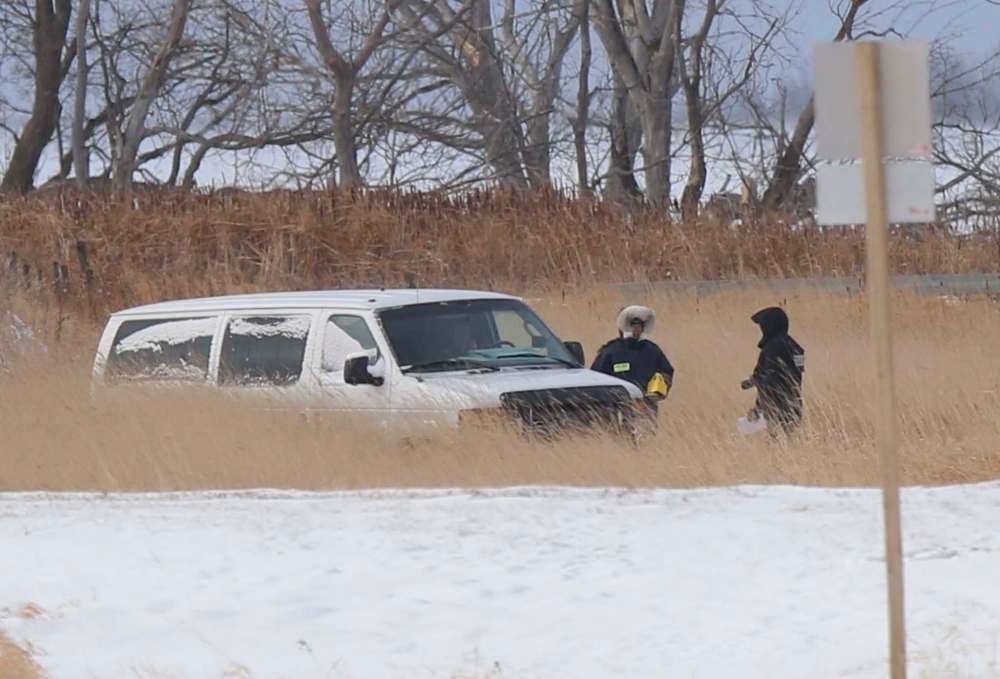‘100 kilometres away from their backup’: RCMP association wants changes after prisoner overpowers lone officer
Advertisement
Read this article for free:
or
Already have an account? Log in here »
To continue reading, please subscribe:
Monthly Digital Subscription
$0 for the first 4 weeks*
- Enjoy unlimited reading on winnipegfreepress.com
- Read the E-Edition, our digital replica newspaper
- Access News Break, our award-winning app
- Play interactive puzzles
*No charge for 4 weeks then price increases to the regular rate of $19.00 plus GST every four weeks. Offer available to new and qualified returning subscribers only. Cancel any time.
Monthly Digital Subscription
$4.75/week*
- Enjoy unlimited reading on winnipegfreepress.com
- Read the E-Edition, our digital replica newspaper
- Access News Break, our award-winning app
- Play interactive puzzles
*Billed as $19 plus GST every four weeks. Cancel any time.
To continue reading, please subscribe:
Add Free Press access to your Brandon Sun subscription for only an additional
$1 for the first 4 weeks*
*Your next subscription payment will increase by $1.00 and you will be charged $16.99 plus GST for four weeks. After four weeks, your payment will increase to $23.99 plus GST every four weeks.
Read unlimited articles for free today:
or
Already have an account? Log in here »
Hey there, time traveller!
This article was published 15/11/2017 (2948 days ago), so information in it may no longer be current.
An association representing Mounties is calling for changes in how RCMP transport prisoners after an 18-year-old man managed to grab a lone officer’s pistol and flee in the police vehicle before being shot dead hours later.
The national president of the Mounted Police Professional Association of Canada said the perils of officers transporting prisoners on long stretches of highway alone have long been known.
“Almost everywhere in the RCMP, you work alone in your vehicles,” said Const. L.P. Theriault in Moncton. “I’ve done it 100 times.

“It happens a thousand times a day all across the country.”
In Manitoba, the practice of transporting a prisoner by a lone law enforcement officer is not the norm. Winnipeg police, provincial sheriffs and correctional officers all transport prisoners with multiple officers.
“The model of policing the RCMP use is 100 years old and has evolved very little,” said Theriault.
“Very often you’ve got police officers 100 kilometres away from their backup,” he said Wednesday. “With the territory we cover, it would require an extensive adjustment on the RCMP’s behalf, which I think is overdue.”
Theriault made his comments while still trying to determine exactly what happened Tuesday night in Manitoba. According to multiple sources, the prisoner — Billy Saunders, 18, of Eriksdale — attacked the officer, stole his pistol and fled in the police van after they stopped for the prisoner to relieve himself on the side of the highway. Following a manhunt that lasted several hours, the prisoner was shot and killed on the Lake Manitoba First Nation while police were trying to arrest him.
Theriault said the RCMP have a policy for transporting people in custody — they are to be transported in a vehicle with their hands cuffed behind them. However, if the prisoner needs to relieve himself, it’s up to the officer to decide how to handle the situation, he said.
“Place yourself in the officer’s shoes,” Theriault said. “Do you unzip his pants and help him? Do you switch the handcuffs to the front? Do you uncuff him and let him do his thing?”
In situations where the officer doesn’t feel safe, the prisoner has no choice but to relieve himself in the vehicle.
“I have had prisoners pee on the back seat,” said the city-based cop. For officers in rural detachments who have to clean their police vehicles, it’s not an ideal choice.
“In Moncton, we have people clean our cars but if you work in rural (areas) what are your options?” Theriault asks.
According to the Mounted Police Professional Association of Canada’s website, the organization provides representation “to identify, resolve and reach consensus on professional and employment concerns (and) seeks to engage in free collective bargaining… a right currently enjoyed by all police officers in Canada, except for RCMP members.”
Manitoba sheriffs and corrections officers never work alone, a source said. The prisoner-to-officer ratio is two officers for up to six prisoners, three officers for up to nine prisoners and four officers for up to 12 prisoners. The officers are not armed — they carry no sidearms, pepper spray or batons, the source said.
“People don’t realize how dangerous their job can be,” the source added.
Corrections officers try to avoid bathroom breaks by having prisoners go before they leave, but if it’s a long trip, they will pull into an RCMP station, the source said.
The Winnipeg Police Service doesn’t let lone officers transport prisoners, either, spokesman Const. Rob Carver said.
If a traffic officer working alone pulls someone over and discovers a warrant for their arrest, the officer will call for a two-officer team to transport the individual, he said. With few exceptions, such as an elderly person with bone or wrist issues, people under arrest are conveyed with their hands cuffed behind their backs and the cuffs are double locked, Carver said.
Because of the size of the city and the short time it takes to get around, there’s no need for Winnipeg police to stop somewhere for prisoners to relieve themselves, he said.
carol.sanders@freepress.mb.ca

Our newsroom depends on a growing audience of readers to power our journalism. If you are not a paid reader, please consider becoming a subscriber.
Our newsroom depends on its audience of readers to power our journalism. Thank you for your support.
History
Updated on Wednesday, November 15, 2017 4:26 PM CST: Tweaks headline


